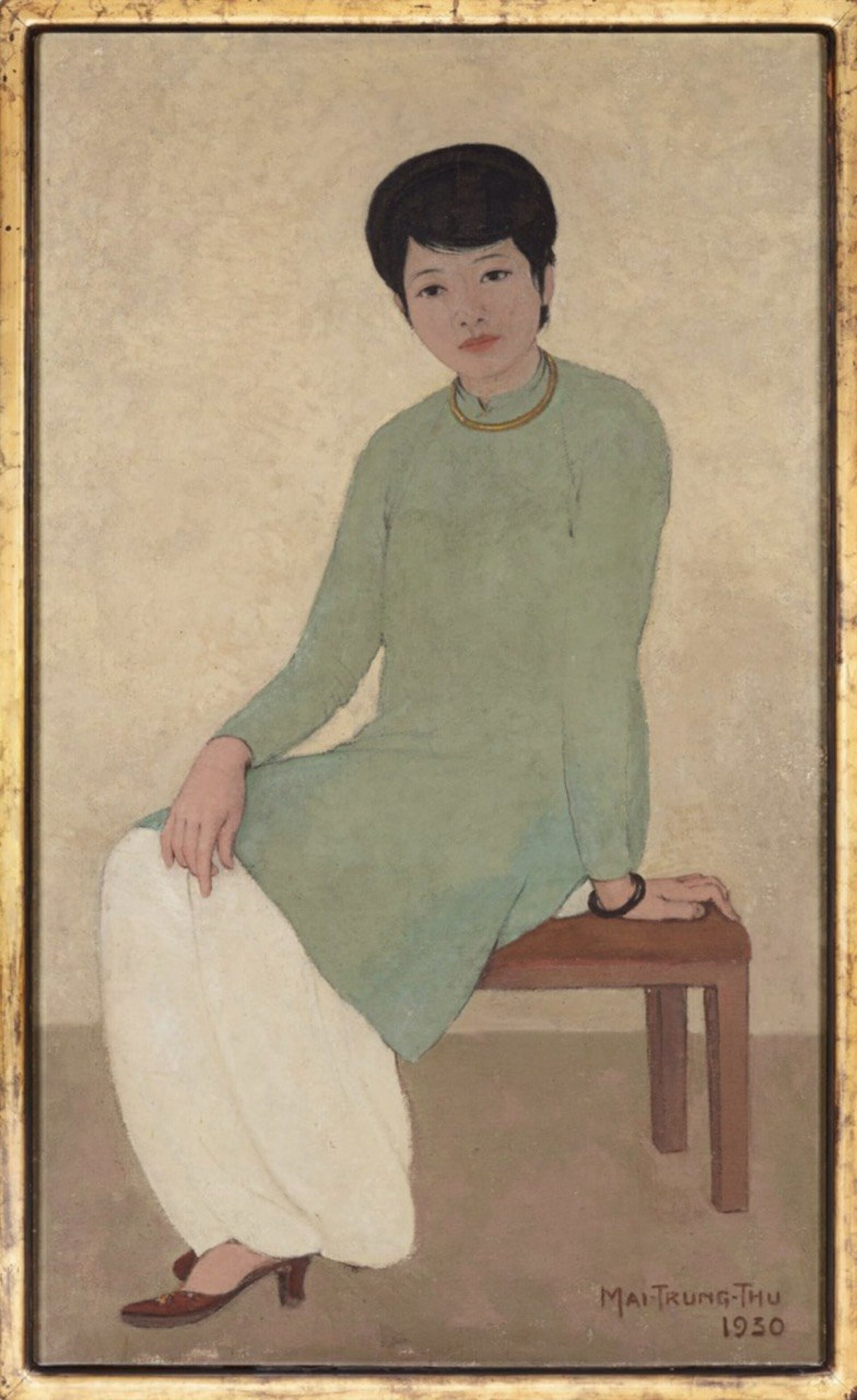
In recent years, when living standards have improved, Vietnamese tend to spend more time enjoying art works.
Vietnamese paintings have sold for hundreds of thousands of dollars on the world market.
The most expensive painting by a Vietnamese painter is ‘Chan dung co Phuong’ (the portrait of Ms Phuong) by Mai Trung Thu (1906-1980). The painting was valued at $3.1 million.
However, the multi-million dollar transaction could be conducted only in France, at an exhibition of Thu’s masterpieces - "Mai Trung Thu - Écho d'un Vietnam Rêvé" (Echo of a Dreamed Vietnam).
Mai Trung Thu, together with Vu Cao Dam, Le Thi Luu and Le Pho, are called the four Vietnamese fiends in Europe.
The old age of the painting (it was created in 1930s) was also a factor that helped the auction succeed and led to the painting selling at a high price.
However, there was another important reason behind the success – the professionalism in organization.
The co-organizer of "Mai Trung Thu - d'un Vietnam Rêvé" were the professional curators of Cernuschi Museum, belonging to the French national network of museums.
Fledgling and unprofessional market
Many gallery owners and painters’ studios told VietNamNet that painting collectors can be divided into two groups – direct and indirect collectors.
The former is understood as people who love painting. They collect paintings to hang in their homes, decorate their living space and bedrooms. The clients of this group mostly seek to purchase paintings at reasonable prices. They accept copied and counterfeit paintings.
The group of clients are mostly Vietnamese who buy paintings created by Vietnamese. They conduct transactions directly with each other, and don’t care much about other issues, including the fame and age of paintings.
However, many clients of this group are called ‘painting players’, who, before making decisions on whether to buy paintings, always consider two factors – the artistry of paintings and the value of paintings, i.e. they consider the profitability of artworks.
The other group includes investors in the true sense of the word. For them, profitability is always a top priority. The clients have knowledge and information about painters, materials of paintings, and international trends, to make investment decisions.
The clients follow strategies in a methodical way. For them, this is a long-term investment, because many painters become more famous after they pass away.
Among contemporary artists, there are many talented Vietnamese. However, to introduce the masterpieces to audiences, other factors must be run in an effective way, from curation to communication to advertisement.
The role of intermediaries
Discussing the role of intermediaries in the painting market, Viet Ngo, a respected collector, stressed that intermediaries act as an important link to clients. So, who are the intermediaries?
They could be trading floors, curators and art galleries. Not only acting as brokers, intermediary units also discover talented painters and high-quality pieces of work. They create a professional playing field, and ‘filter’ paintings before the paintings reach to customers.
In other countries, the role of intermediaries is highly appreciated and their presence at transactions deals are indispensable. In Vietnam, they are ignored.
Hang Blue is the owner of several galleries which operates in Hanoi. She complained that the procedure of working in chain and professionally has been upset and broken.
“Nowadays, I just sell the first works of painters, and then collectors contact painters themselves,’ she said. “In many cases, people ‘take a shortcut’ and ignore intermediaries to optimize profit."
Therefore, she said, investing in young painters in a market like Vietnam is a venture investment.
Dong Phong